On this trip around the neighborhood, I check in on conifers.
Upstaged by the flamboyant flowers of high spring—azaleas and rhododendrons, peonies, irises, and poppies—conifers are often overlooked this time of year, which is a shame. Although they don’t make a big spectacle, conifers are undergoing changes now, too.
I love the contrast between the dark green old needles and the Granny-Smith-green new foliage of many evergreens in spring. The sun illuminates this coast redwood’s (Sequoia sempervirens) fresh yellow-green leaves against its glossy, dark needles carried over from years past.
This Douglas fir’s (Pseudotsuga menziesii) new growth is soft and fluffy like feathers. Douglas firs in full sun like this one are covered now in feathery young foliage, while those struggling with shade lag behind.
Some conifers are a mix of bluer shades in spring. Colorado spruce (Picea pungens) pushes out mint green growth that in some forms turns powder blue as it expands and hardens up. Extra-blue seedling Colorados are known as “shiners” in the trade.
What an interesting play of color and texture is offered in this Spanish fir (Abies pinsapo)! Unlike the foliage of other firs, which is soft and pettable, Spanish fir’s older needles are as stiff as hairbrushes, while the new leaves feel more like Koosh balls.
Most pines are late to leaf, sending up these “candles” of new growth after even slowpokes like walnut and ash have flushed out. When the candles are still tight, like these Japanese white pine’s (Pinus parviflora) are, they may be snapped in half to encourage the plant to become bushier and more compact.
For many pines now, love is in the air. What will happen when I flick this Scots pine’s (Pinus sylvestris) male flowers?
You guessed it–a cloud of pollen erupts.
And here is one of the female flowers, waiting to be serviced. Isn’t it cute?
These are mugo pine female flowers. You can see their resemblance to pine cones, which they will become in time.
And I think these are ponderosa pine flowers.
Lacebark pine (Pinus bungeana) has arresting bark that peels off in jigsaw-puzzle pieces.
Its needles are clustered into groups of three. All pine needles are grouped into twos, threes, or fives, which can be helpful information when trying to identify a species and narrow down the possibilities of which one it may be.
I couldn’t resist smacking this lacebark pine, too. I hope the shower of pollen didn’t damage my camera. Tom Kimmerer of Venerable Trees tells me that allergies to pine pollen are actually rare compared to allergies to grass or hardwood pollen.
Douglas firs are done flowering, as evidenced by their cones, which are already formed, but still green.
Ditto on the Western hemlocks (Tsuga heterophylla).
It’s hard to see the young cones of true cedars (Cedrus spp.), because they’re usually high up in the tree, but you can make out a couple of new purple cones on this blue Atlas cedar (Cedrus atlantica glauca). Cedars leaf out earlier than other conifers and their needles are arranged in distinctive, circular clusters along the branches.
Larches also have needles arranged in pompoms, but unlike cedars, their needles drop in the winter.
This larch (Larix decidua ‘Horstmann’s Recurva’) was blooming in Mid-March at Portland Nursery.
What other conifers have you noticed putting on a display in spring?

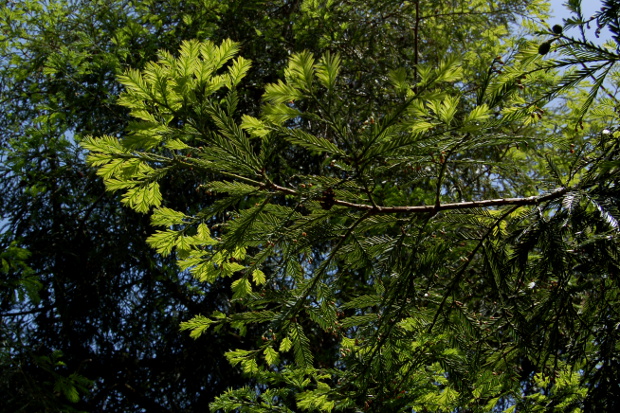
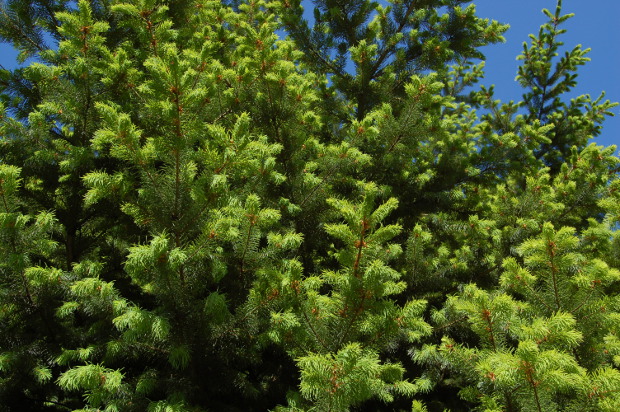
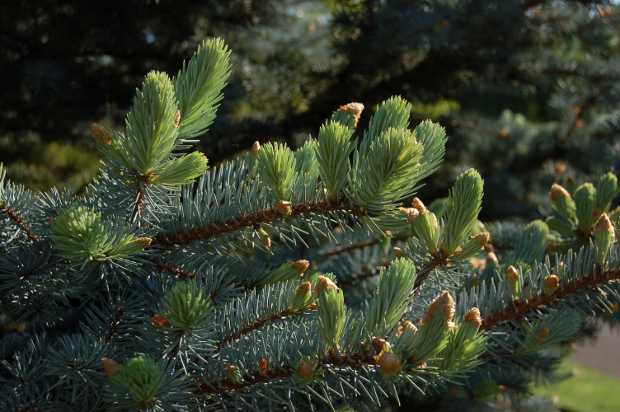
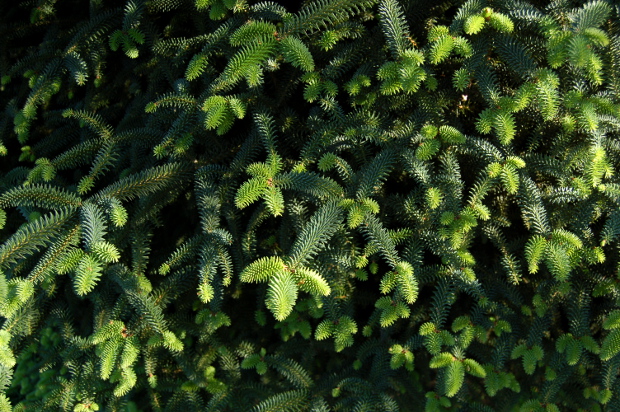
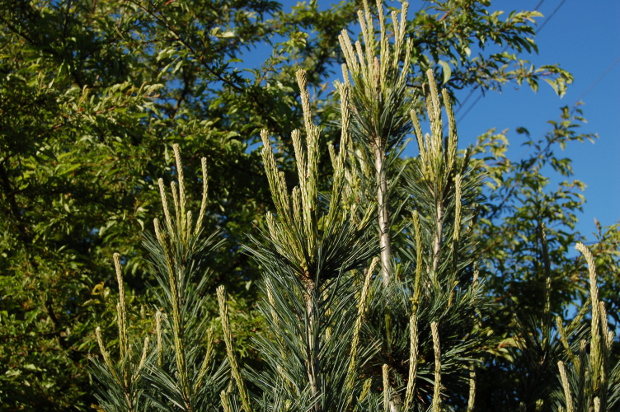
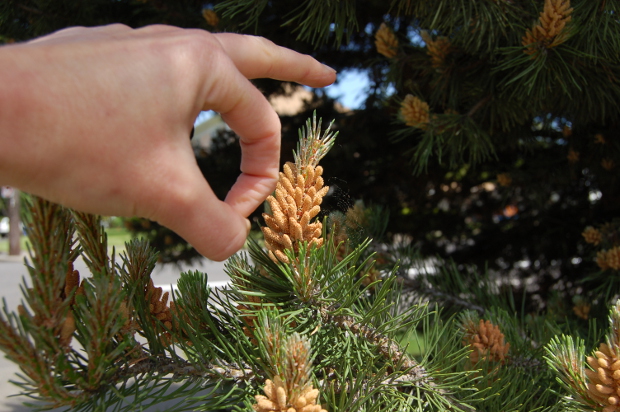

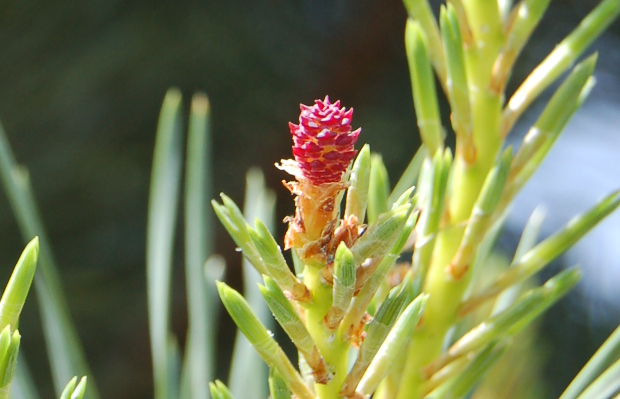
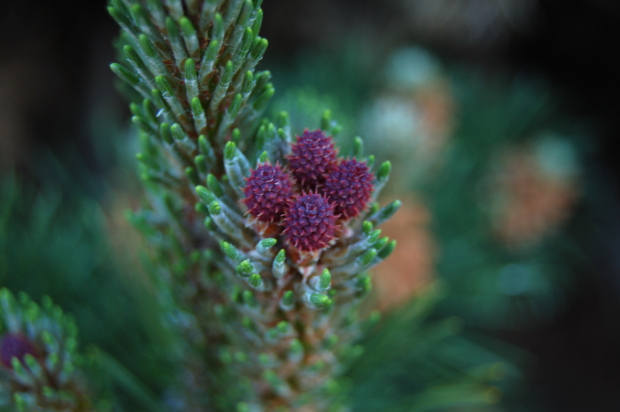



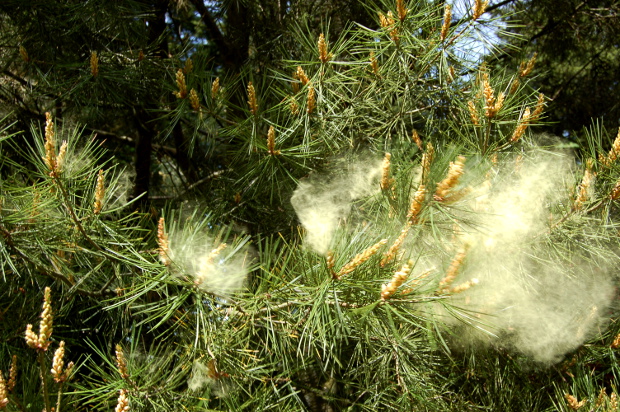
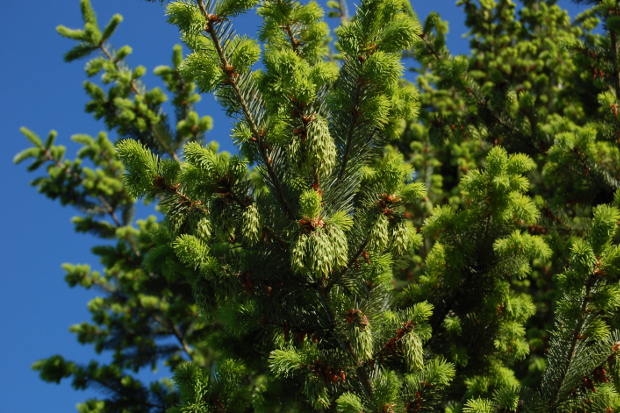


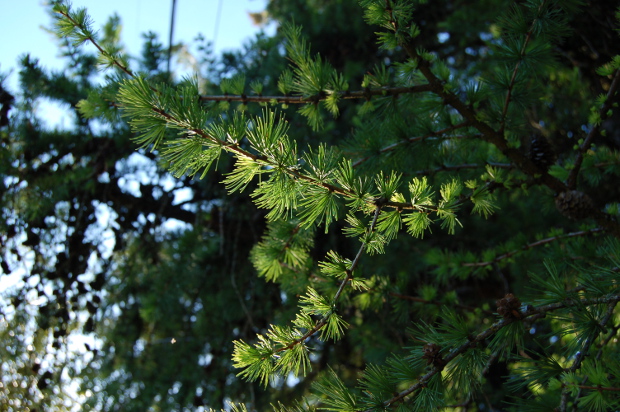
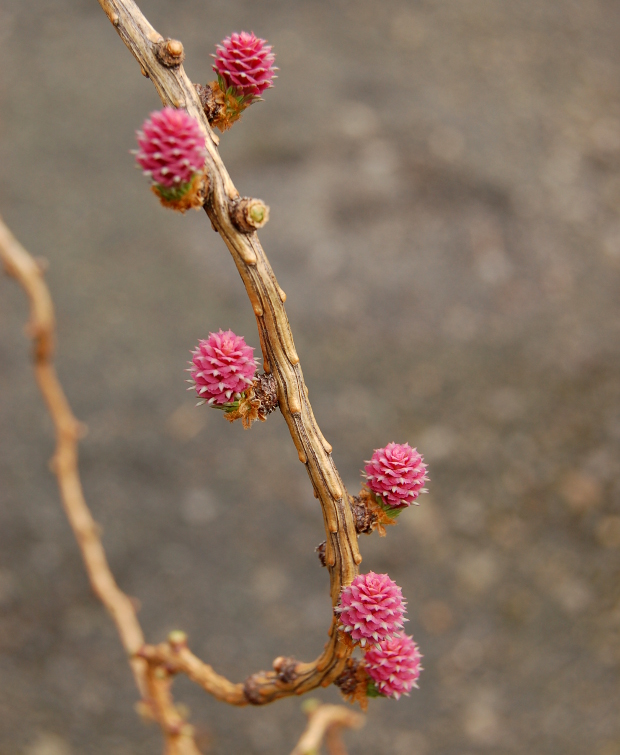























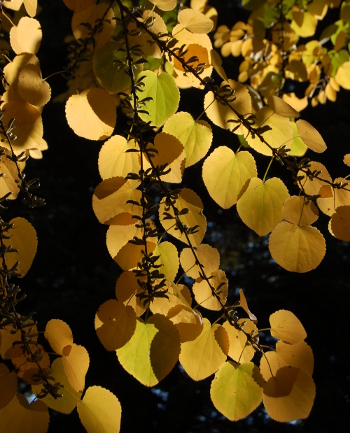



Hello Amy. I enjoyed this article, especially the photos. I was wondering if I could have permission to use the photo of pollen being released from the lacebark pine, for an article that I’m writing on DNA barcoding of pollen. I will acknowledge you as the copyright holder and send you a link to the article.